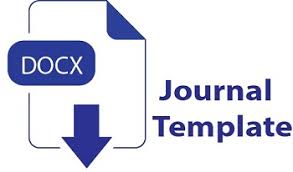Efisiensi Bahan Bakar Pada Mesin Chooper
Abstrak
Meningkatkan efisiensi konsumsi bahan bakar merupakan tantangan dalam pengembangan mesin chooper. Beberapa prosedur pengujian harus dilakukan untuk meningkatkannya, hal ini bertujuan untuk mengevaluasi kinerja mesin dengan menggunakan bahan bakar yang memenuhi persyaratan RON 90 dan 92. Pengujian dilakukan pada putaran mesin 2.700 rpm, masing-masing dilakukan tiga kali dengan sudut potong konstan diposisi 10 derajat. Lamanya pengoperasian mesin bakar berdampak pada penggunaan bahan bakar. Perbedaan konsumsi rata-rata antara pengujian 1800 dan 1200 detik yang menggunakan beban pemotongan pada RON 90 lebih baik hingga 2%. Dengan waktu yang sama dengan pengujian sebelumnya, pengujian RON 92 menunjukkan peningkatan efisiensi bahan bakar sebesar 0,5%. Peningkatan kecepatan menghasilkan pembakaran yang lebih menyeluruh, sehingga mengurangi penggunaan bahan bakar. Kecepatan pencacahan yang tinggi dapat digunakan oleh pengguna untuk meningkatkan penghematan bahan bakar.
##plugins.generic.usageStats.downloads##
Referensi
Alemneh, T., & Getabalew, M. (2019). Beef Cattle Production Systems , Challenges and Opportunities in Ethiopia. Juniper Online Journal of Public Health, 5(1), 2019. https://doi.org/10.19080/JOJPH.2019.05.555651
Badan Pusat Statistik Kalimantan Tengah. (2022). Jumlah Penduduk (Jiwa), 2015-2021. https://kalteng.bps.go.id/indicator/12/390/1/jumlah-penduduk.html. https://kalteng.bps.go.id/indicator/12/390/1/jumlah-penduduk.html
Badan Pusat Statistik Provinsi Kalimantan Tengah. (2022). Sapi Potong 2016-2018. https://kalteng.bps.go.id/indicator/24/647/1/sapi-potong.html.
Cao, Y., & Li, D. (2013). Impact of increased demand for animal protein products in Asian countries: Implications on global food security. Animal Frontiers, 3(3), 48–55. https://doi.org/10.2527/af.2013-0024
Davis, K. F., Gephart, J. A., Emery, K. A., Leach, A. M., Galloway, J. N., & D’Odorico, P. (2016). Meeting future food demand with current agricultural resources. Global Environmental Change, 39, 125–132. https://doi.org/10.1016/j.gloenvcha.2016.05.004
Delgado, C., Rosegrant, M., Steinfeld, H., Ehui, S., & Courbois, C. (2001). Livestock to 2020: The Next Food Revolution. Outlook on Agriculture, 30(1), 27–29. https://doi.org/10.5367/000000001101293427
Gezahagn, K., Getnet, A. and, & Feyisa, F. (2017). Review on Major Feed Resources in Ethiopia: Conditions, Challenges and Opportunities Farming System Dynamism in Ethiopia View project African Chicken Genetic Gains View project. Academic Research Journal of Agricultural Science and Research, 5(3), 176–185. https://doi.org/10.14662/ARJASR2017.013
Han, W. Q., & Yao, C. De. (2015). Research on high cetane and high octane number fuels and the mechanism for their common oxidation and auto-ignition. Fuel, 150(February), 29–40. https://doi.org/10.1016/j.fuel.2015.01.090
Kamaruddin, M. R., Hassan, N., Sulaiman, S., & Faiz, M. A. (2020). Analysis of the Exhaust Emission from Vehicle Fueled with Variance Research Octane Number Fuel. 2(1), 1–9.
Karl J Wild, Veit Walther, J. K. S. (2009). Optimizing Fuel Consumption and Knife Wear in a SelfPropelled Forage Chopper by Improving the Grinding Strategy. American Society of Agricultural and Biological Engineers (ASABE) Annual International Meeting 2009,. https://doi.org/doi:10.13031/2013.27295
Leavy, P. (2017). Research Design (1 ed.). The Guilford Press A Division of Guilford Publications, Inc. 370 Seventh Avenue, Suite 1200, New York, NY 10001. www.guilford.com
Muhammad, K., Walusimbi, K. H., Jimmy, K., & Swidiq, M. (2018). Design and performance evaluation of a NARO forage chopper prototype for smallholder dairying systems. Design and performance, 5(11), 547–551.
Nakata, K., Uchida, D., Ota, A., Utsumi, S., & Kawatake, K. (2007). The impact of RON on SI engine thermal efficiency. SAE Technical Papers, 456–462. https://doi.org/10.4271/2007-01-2007
Nikolaou, N., Papadopoulos, C. E., Gaglias, I. A., & Pitarakis, K. G. (2004). A new non-linear calculation method of isomerisation gasoline research octane number based on gas chromatographic data. Fuel, 83(4–5), 517–523. https://doi.org/10.1016/j.fuel.2003.09.011
Vu, V. D., Ngo, Q. H., Nguyen, T. T., Nguyen, H. C., Nguyen, Q. T., & Nguyen, V. Du. (2020). Multi-objective optimisation of cutting force and cutting power in chopping agricultural residues. Biosystems Engineering, 191, 107–115. https://doi.org/10.1016/j.biosystemseng.2020.01.007
Wild, K. J., Walther, V., & Schueller, J. K. (2009). Optimizing fuel consumption and knife wear in a self-propelled forage chopper by improving the grinding strategy. American Society of Agricultural and Biological Engineers Annual International Meeting 2009, ASABE 2009, 9(09), 5899–5916. https://doi.org/10.13031/2013.27295
Yonas, M. (2021). Design, fabrication and performance evaluation of animal feed chopping machine. African Journal of Agricultural Research, 17(8), 1155–1160. https://doi.org/10.5897/ajar2021.15626
##submission.copyrightStatement##
##submission.license.cc.by-sa4.footer##Copyright Ⓒ Author






 https://orcid.org/0000-0003-1726-3651
https://orcid.org/0000-0003-1726-3651

